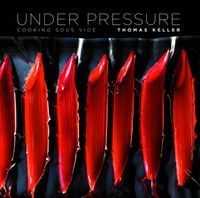Advertisement
A Few Additional Tips to Keep in Mind as you Cook from this Book
Appears in
Published 2008
- Read the preceding pages closely, taking particular note of the section on safety. Safety issues involved with sous vide cooking are different from those for traditional forms of cooking. They are not difficult to understand or follow, and they are very important. Please adhere to safety recommendations scrupulously.
- Read the recipe through before you begin. Again, each dish has been broken down into its components, and each component has its own recipe. Use this format to create your own game plan when preparing a complete dish. Note that more than one ingredient can go into the water bath at the same time if they require the same temperature.
- Ingredients must be thoroughly chilled, and cold throughout before they are vacuum-packed.
- Herbs should not come in direct contact with food that is vacuum-packed. Doing so will cause some areas of the food to take on more flavor than others. For this reason, we roll herbs and aromatics in food-safe plastic wrap (we call it a sachet) before putting them in the main bag.
- Always bag food in a single layer to ensure even cooking.
- Many, if not most, of these recipes call for including some sort of liquid in the bag—fat, stock, or a dairy product. All these recipes have been tested using a chamber vacuum packer. We don’t recommend you attempt recipes that include liquids in the bag unless you have a chamber packer.
- Timing in these recipes is based on the cold vacuum-packed food being submerged in water that is at the proper temperature. The heating element and the quantity of water being heated will determine the length of preheating time, but in a test of one of our circulators, it took 1 hour for 11.4 liters (3 gallons) of water to go from 10°C (50°F) to 60°C (140°F) and 1¾ hours to reach 85°C (185°F). Of course, you can start with hot tap water, or heat water on the stove, to reduce the time.
- Our stocks do not have added salt. If you are using stock that has been salted, take that into consideration as you season.
- Certain components of dishes are prepared in larger proportions than are needed in the individual recipe. There are a myriad of uses for any of these.
- When recipes call for the use of a chinois, use a fine-mesh chinois (chinois fine in French), not a perforated one.
- Few plating instructions are given in these recipes, because plating in restaurants is often up to the chef preparing the dish and will be defined as much by his or her personality as by the food. The size and shape of the plate used also determines how a dish will be plated.

